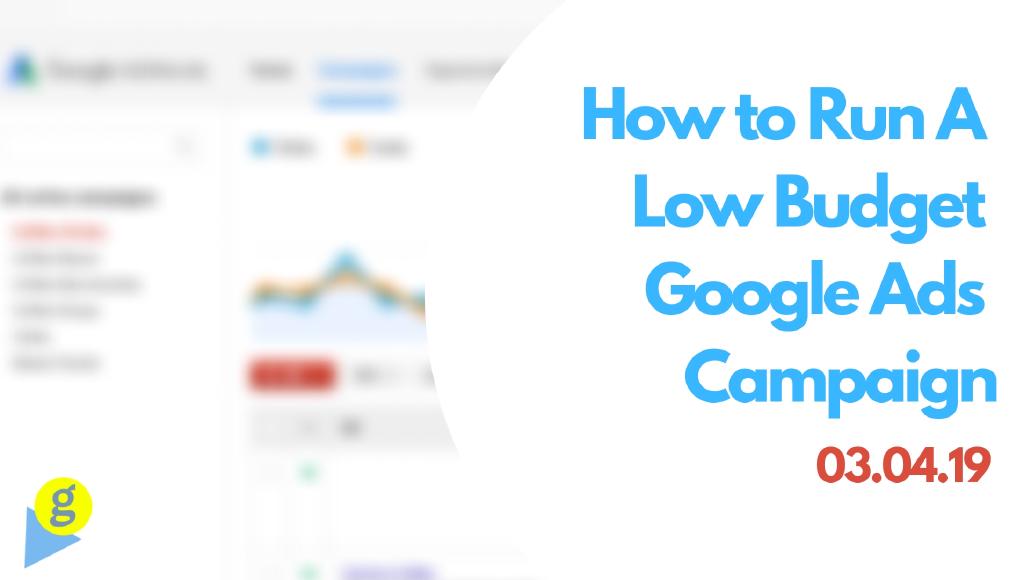As we’ve gone on about this in prior articles we won’t go on about it here but using Google Ads can generate significant revenue for your business, economically. In fact, every £1 that is spend on Google Ads results in £2 revenue. That’s an incredible statistic.
It means that users of Google Ads can double their money.
The biggest issue is that PPC can be incredibly daunting for the newly initiated to get to grips with. For these folks, we’ve created this guide.
Good bye casino thinking – hello methodical money makers. You don’t need to risk big piles of cash either because with Google Ads there are no minimums. Within this guide, we’ll show you how to spend as little as £150 per month and get results from the get-go using a tightly grouped ad group and targeted search terms relevant to your business.
Control Budget with a Maximum Daily Budget
To protect your marketing budget and to avoid over-spending, we suggest controlling your budget with an explicit daily budget. Now, because we’re only using a little budget here the results you can expect should be in-line because with £150, you’re not going to be sky rocketing like a San Francisco Unicorn but it should provide you with enough results to warrant expanding your campaign and scaling your budget upwards.
To start with, your daily budget will be £5 per day. This means that if we define a set of keywords which cost £1 per click, you can expect up to 5 clicks per day.

The more the merrier but for the sakes of this example, let’s keep it at £5 per day for the month. Taking a look at the median cost of a click (the CPC) across all campaigns for all industries in 2018, we can see that the average CPC is £2.03. Yikes!
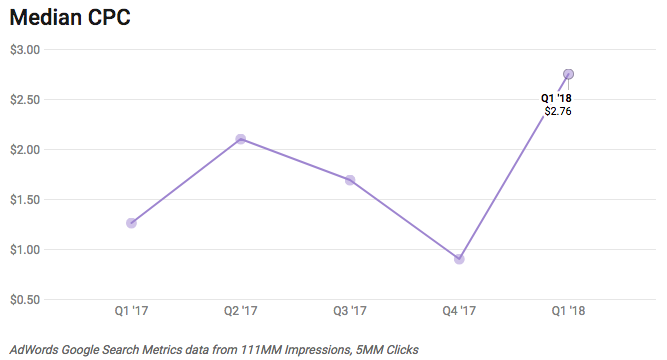
Attribute: https://blog.adstage.io/google-adwords-benchmarks-q1-2018
Reviewing the average medium Cost-Per-Click is a great way to get some perspective on your campaign. If we manage to meet this average, we’ll experience 2 clicks per day on £5 per day. Surprisingly, if you look on the right place you can achieve a lower CPC and well show you how.
Build up from a Specific Single Keyword
Low-budget Google Ads campaigns aren’t new – in fact, they are the bedrock of small businesses starting out. In this article, we’re not talking about Growth Hacking or Growth Tricks because they’re mostly made out of hot-air. What we’re talking about is a data-driven approach to establishing a campaign which works, repeatedly and provenly.
Most of the time, these low-budget campaigns are run incorrectly as they’re driven in the same way larger campaigns are consingle-imaged and setup. This is not the right way of doing it – a small Google Ads campaign is not simply a scaled-down version of a larger one. It is its own thing.
Also note, when you’re running a small-scale campaign, you simply cannot afford to big on multiple keywords. The budget just isn’t capable of running a campaign which runs more than 1 keyword but bidding on just 1 keyword should get you up and running successfully with a positive ROI.
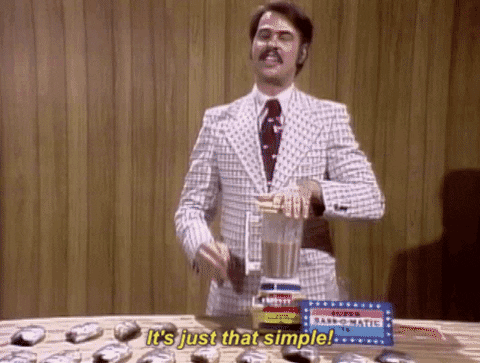
The worst thing you can do is to spread yourself too thing with a small campaign by bidding on multiple keywords and creating too many ad groups. When it comes to small low-budget campaigns, simplicity trumps complex.
The keyword you select should be as specific as possible. You shouldn’t be targeting head terms like “Lawyer”. Someone searching for ‘Lawyer’ probably has no idea what service they’re looking for – they’ll probably click your advert to learn more about the service they’re looking for before clicking over to another website to learn more. This holds no value for us small campaign holders.
Specificity is the key here, for both ad rank and quality score. The more specific you are, the cheaper your cost enabling you to produce far more from less.
So, what type of keywords do you need?
Look for medium volume on the traffic side of things for the keywords you evaluate, with low competition and scout the search results to match intent.
Intent is how we grade the level of interest searchers hold. High intent would mean they are very close to being ready to buying something whilst low intent means they are just starting to look for things to buy. We want High intent because we want to ship products and sell our services now – not in the future.
If the search is ‘need a lawyer near me’ they obviously want legal assistance with an urgent matter. But if the search is ‘great websites’ they probably want an article ranking different websites, not your product claiming to be the best.
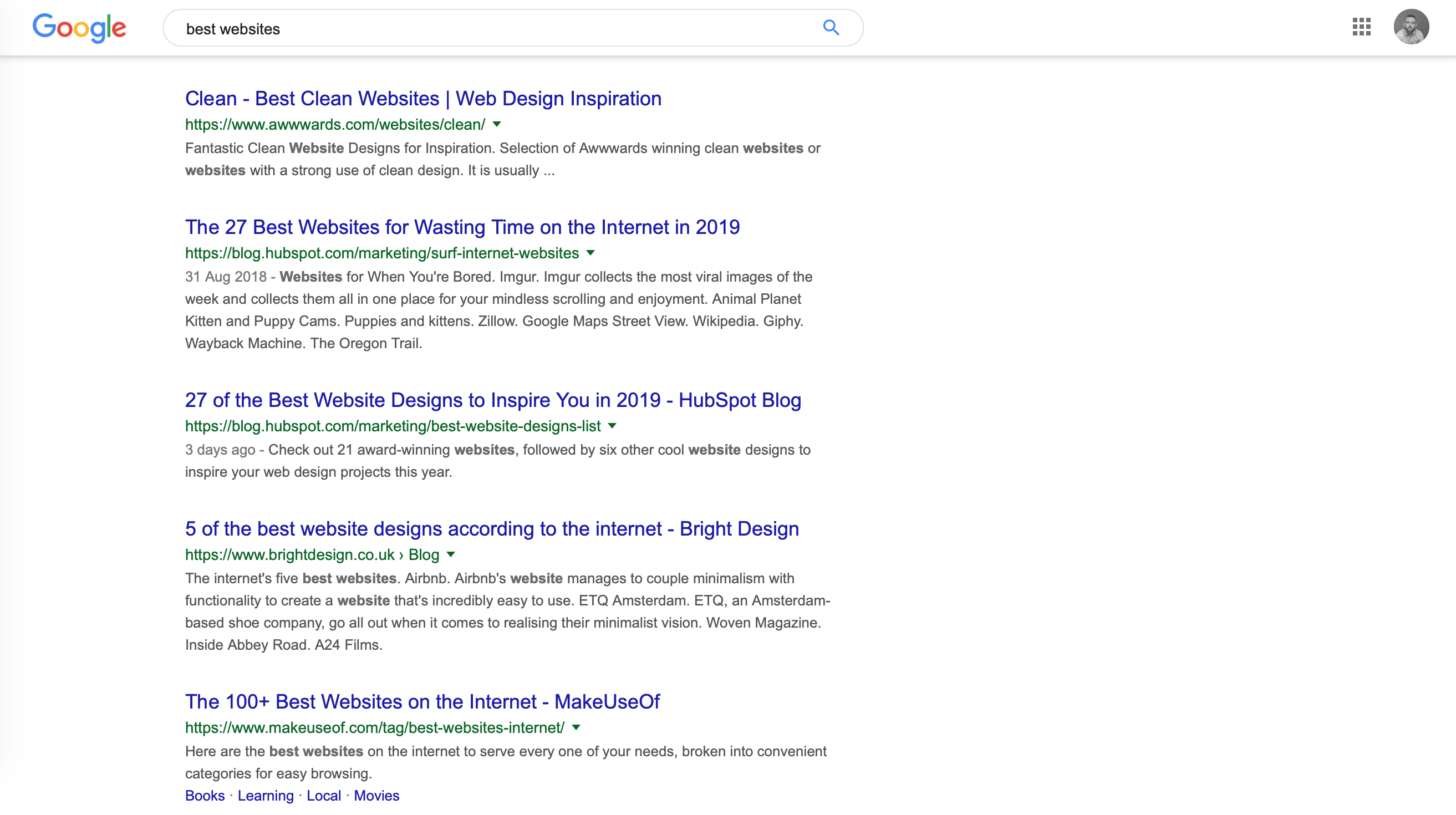
The best way to discover suitable keywords for your campaign would be to use the free Google Ads tool called ‘Google Ads Keyword Tool’. This provides you with valuable data including but not limited to bidding cost estimates for Top page and subsequent spaces.

As we’re limiting ourselves in this example to £5 per day or £150 per month, we want great keywords. Bidding on multiple keywords here will reduce your results because you’ll be getting very little exposure on each additional keyword. Plus, for additional keywords it takes far longer to setup and consingle-image due to the new landing pages and ad copy which need to be drafted and launched.
Create your first Single Keyword Ad Group or SKAG
When you’ve found your keyword (one that is medium volume without much competition), it’s then time to develop a single keyword ad group, as known as a SKAG (Single Keyword Ad Group).
SKAG is an ad group within your campaign which features just one keyword, rather than multiple contradictory to Googles advice.
SKAGs look like this within your Google Ads campaign:

SKAGs take your single keyword and modify it with free specific match-types.
• Broad match modifier: +keyword
• Phrase match: “keyword”
• Exact match: [keyword]
SKAGs work by producing specificity. When you have dozens of keywords in a single ad group, you run into a problem of writing ads that can’t possibly relate to all of the keywords.
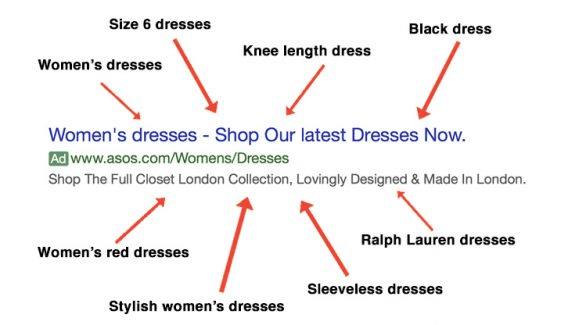
Attribute: https://conversionxl.com/blog/single-keyword-ad-groups/
Google often talk about working towards increasing the quality of your ads and using SKAGs helps to achieve this. By only having a single search term within your keyword set, you can ensure that the wording in the correlating advert reflects the searches keyword perfectly. This is the key behind increasing the quality of your ads so that you receive a cheaper CPC, a higher CTR providing you with a median beating campaign.
Look at how the quality score factor is broken down in Google’s own words below.
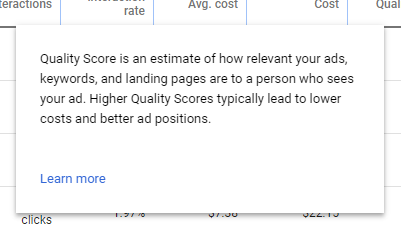
Do you think it’s ever possible to create an ad and a landing page experience for a single ad group which contains up to 15 different keywords? Yeah, we don’t think.
The more specific you are with your ad groups and landing pages, the better performance you experience. Your campaign will be cheaper and it will generate more results than competing ones.
On low-budget campaigns, you need to generate the higher Click-Through-Rate (CTR) combined with a high conversion rate. If you’re not converting, there isn’t any point in running the campaign. Converting your target audience is crucial.
To setup the SKAG, create a single ad group on your new campaign and use the three keyword modifiers we listed just above, shown below.
• Broad match modifier: +keyword
• Phrase match: “keyword”
• Exact match: [keyword]
Save it – and let’s move on.
Utilize ECPC Bidding
On the Google Ads platform, there are ten different types of bidding styles to choose from. Most people will see bidding types like ‘maximize conversions’ or ‘maximize clicks’ and immediately flock to them – and for good reason.
They sound like the most effective choice, especially on a low-budget campaign where your goal is to turn small amounts of budget into positive conversions. The one we’re going to focus on today is called Enhanced CPC aka ECPC.

What is it?
ECPC is a smart bidding type where Google applies its machine learning (yes, AI!) and automation to increase or decrease your bids on a given search on your behalf.
Given all the variables such as keywords, competitor activity, relevance and funnel stage, Google’s AI will determine whether your bid should be higher or lower to obtain the conversion up for grabs.
This helps you prevent wasted clicks where a user might click on your ad, find that it’s not all that relevant to their need and click back to the SERP’s to a competitor. Skipping this step, you save money on errant clicks and maximise efforts.
A recent experience with Google Ads bidding strategies put ‘Maximise Clicks’ in a head-to-head battle with ECPC to see which would perform best. Whilst maximise clicks did exactly what it was supposed to do (maximise clicks) it resulted in less conversions, a lower CTR and a cost per lead that was £124 more expensive.

Attribute: https://www.ppchero.com/max-clicks-for-budget-limited-ppc-campaigns-case-study/
Maximise clicks was the winner on impressions, clicks and cost per click but the overall loser in conversions and cost-per-lead.
Maximise clicks can be great for producing brand-awareness oriented results but when it comes to real sales and people paying you, it’s no match for ECPC – Currently, although the more people who use Maximise Clicks the more accurate the AI will become. This may be the future but for now, it’s best use is for brand-awareness campaigns.
Create a SKAG Landing Page That Converts
Landing pages in the majority of PPC campaigns are to blame for the lack of conversions. Configuring an ad campaign in contract to designing a landing page is child’s play. If you’re following our SKAG model, then you’re going to be fans of specificity and are thereby honing in on specific terms and offers that your audience is directly looking for.
How to tell if your landing page is poor in comparison to your ads? Take a look at the conversion rate your PPC landing page has compared with the Click-Through-Rate your ad experiences. If there’s a big gap, you’ve got a problem and it’s landing page shaped.
What’s usually the cause? What could cause such a big gap between the people you’re funnelling through to your landing page and the number of enquiries or sales you’re receiving?
Message. Match.
Message Match is defined perfectly by Unbounce as
“A measure of how well your landing page copy matches the phrasing of the ad or link that brought the visitor there. For PPC marketers, this means matching your ad copy to your landing page headline. Strong message match increases conversions because it reassures people they’ve come to the right place.”
Fundamentally, it’s about serving up content which reflects the searchers intent/expectations. Performing a search for ‘best website’ and your landing page promises a comparison of some of the best websites on the internet is a good match. Serving a landing page which tries to get them to buy a potato, is a poor match.
Rightfully so, because users are going to jump away from your landing page if on first-glance, it doesn’t serve them. Using message match, I was able to increase conversion rates for a client by a whooping 500%. Running PPC ads, we created a SKAG style landing page directed as specific market segments for the client.
A great example of this is someone searching for ‘divorce solicitor quotes’.
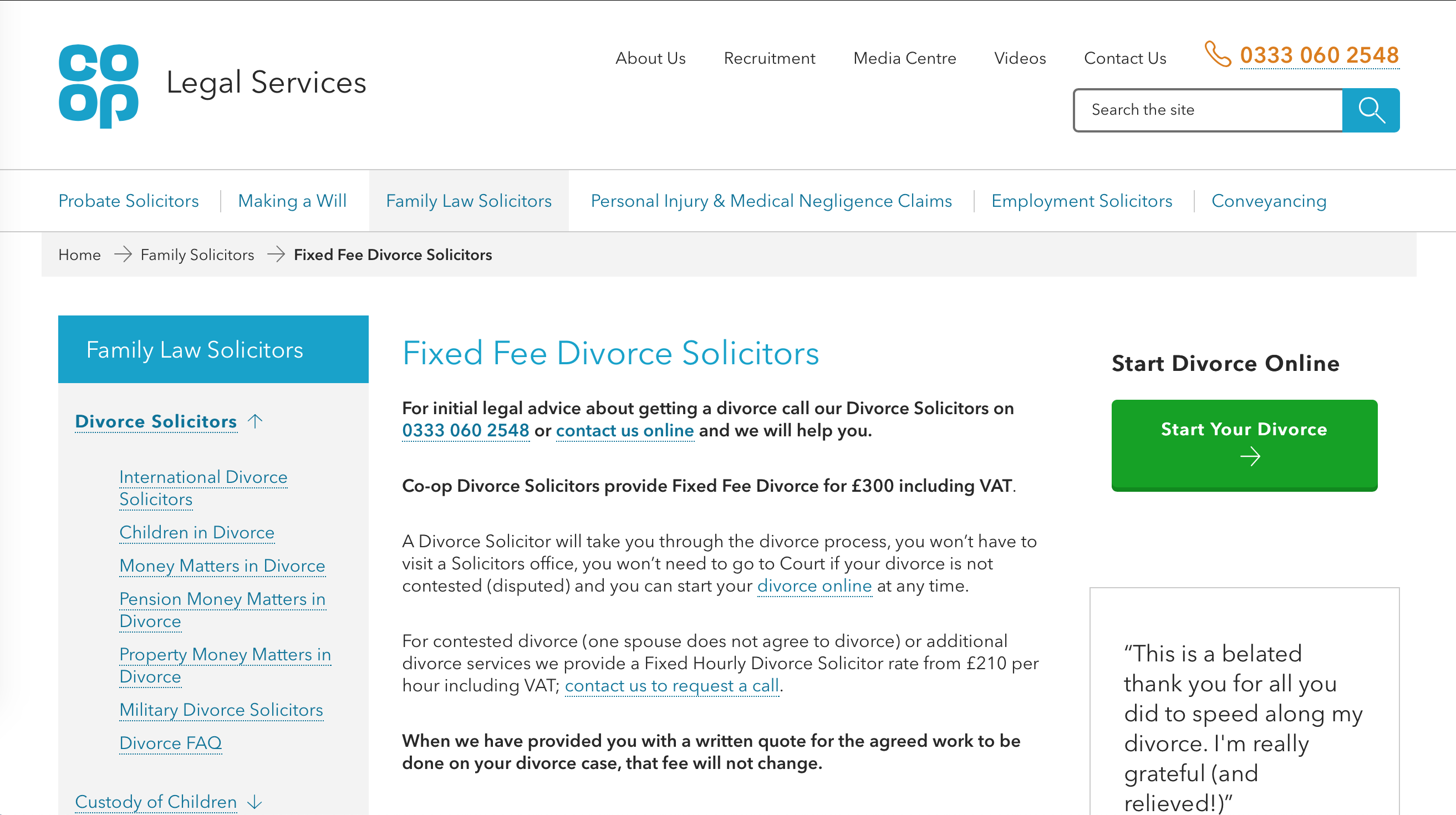
And ‘conveyancing solicitor quote’
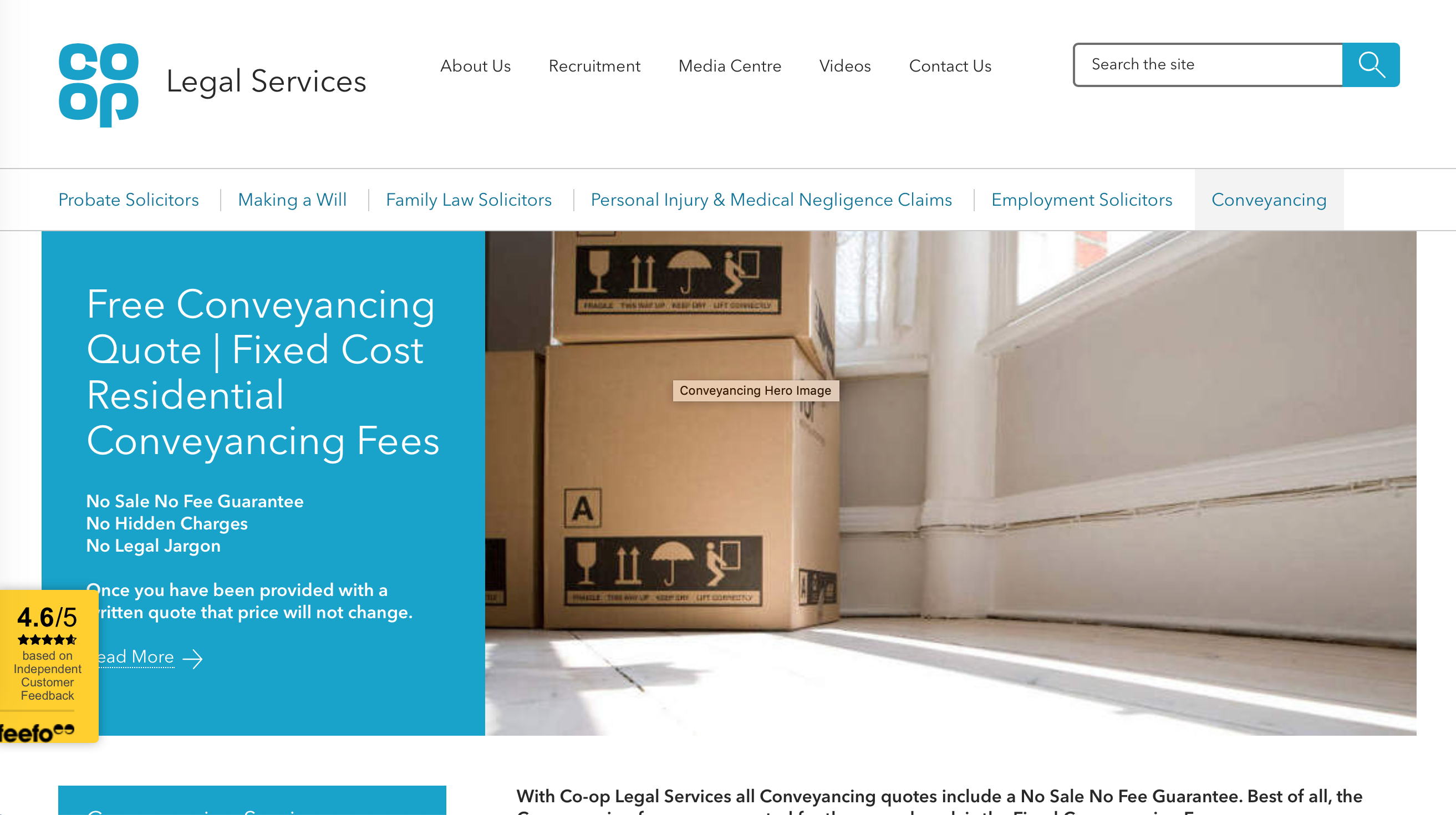
Making the landing page reflect the searchers intent, making it abundantly clear that the service you’re showing them is the service they searched for is crucial in making your campaigns work.
Not only does the copy match the ad copy to the landing pages but the offer was matching intend. The searcher was looking for a quote and the landing page highlights how to get a quote. The searcher was searching for a specific type of solicitor, and the landing page highlights the same type of solicitor.
The searchers intend was matched perfectly by ‘the Co-Op Legal Services’ company.
One you’ve developed your SKAG-style landing page, head over to the ad you created for your new campaign and SAG and place it as the final URL.
If you want to improve the optimisation, you can install UTM tags at the account-level. With low-budget campaigns, everything needs to be perfect and these small differences along the way can cause tension and lost conversions.
Let’s review
• Use message match by keeping your copy, keywords and the offer the same from your ad to your optimised landing page.
• Start with a low-risk offer, don’t immediately jump to a sale (unless you’re running an e-commerce campaign or something locally targeted).
• Customise the landing page for specific market segments you target.
Summary
Google Ads holds the power to grow fast and reliably, providing a serious return on investment. Oftentimes, it takes a serious upfront investment to make that happen. There are so many businesses who could make use of Google Ads but don’t because they fear the complexity of the platform and the risk of losing their initial investment.
Just like any marketing channel or strategy, there is risk and results aren’t guaranteed. Google Ad results are progressive and driven higher over time. If someone does promise you specific results run for the hills! It’s just not possible until they start to run your campaign and start seeing some meaningful results.
Remember, protect your budget by setting a daily maximum budget. Be specific with your keywords and only pick keywords which have at least medium volume and low competition. Don’t select more than 1 keyword and put time into your landing page – it does pay off.
We’ve had great luck with SKAGs and whilst it may be unlikely that those of you running large campaigns will have the resources to implement SKAGs, those running small ones will. For those folks, it won’t change your world overnight but it will hopefully build up your confidence in the platform to help you scale it up overtime maintaining a positive ROI.
